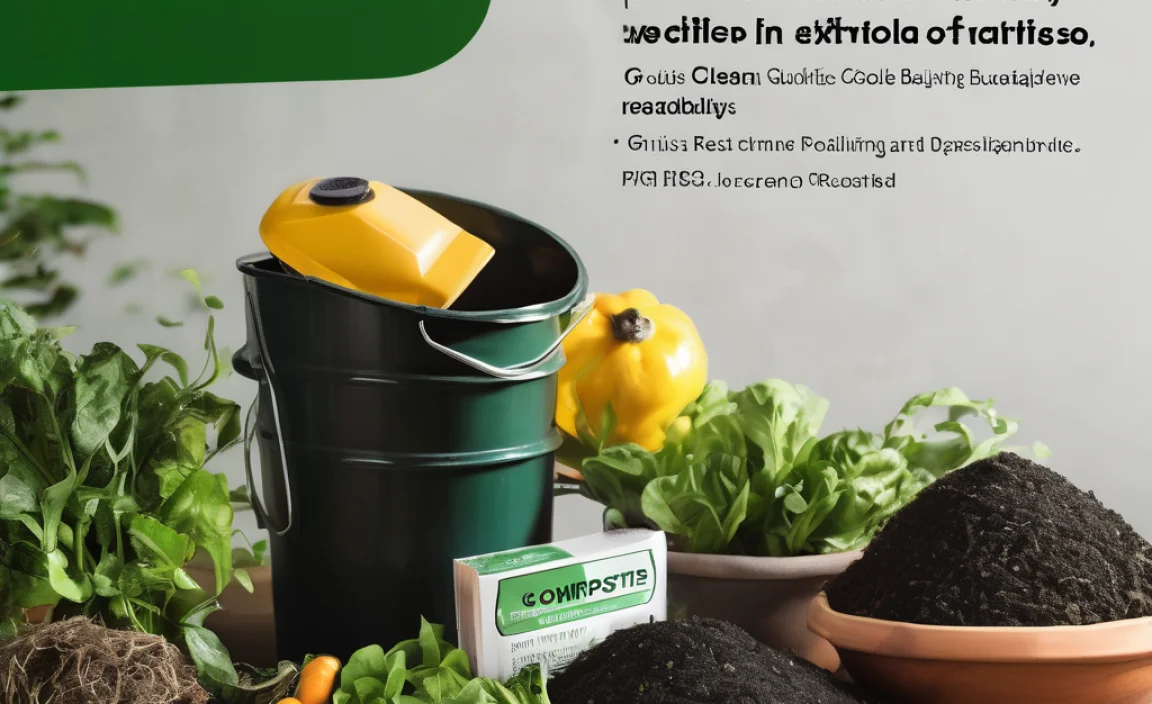How to Connect Washing Machine to Sink: A Step-by-Step Guide
Quick Summary: Connecting your washing machine to the sink is straightforward! First, gather your tools: pliers, drain hose, and hose clamps. Turn off the water, attach the drain hose to the washing machine, and secure it with clamps. Place the hose end into the sink or connect it to the sink drain using a universal adapter. Turn on the water and test for leaks. You’re done!
Is your laundry room cramped? Or maybe you’re renting and don’t have direct washer hookups? Connecting your washing machine to the sink can be a lifesaver. It’s simpler than you think, and you don’t need to be a plumbing expert. This guide breaks down the process into easy-to-follow steps. We’ll cover everything from gathering your tools to testing for leaks. Get ready to say goodbye to laundry room headaches!
Why Connect Your Washing Machine to the Sink?
There are several reasons why hooking up your washing machine to the sink is a great idea:
- Space Saving: Ideal for apartments or small homes without dedicated laundry rooms.
- Cost-Effective: Avoid expensive plumbing modifications.
- Convenience: Easy access to water and drainage.
- Temporary Solution: Perfect for renters who can’t make permanent changes.
What You’ll Need
Before you start, gather these essential tools and materials:
- Washing Machine Drain Hose: Ensure it’s long enough to reach the sink.
- Pliers: For tightening hose clamps.
- Hose Clamps: To secure the hose to the washing machine and sink drain.
- Universal Sink Adapter (Optional): If your sink drain doesn’t fit the hose directly. You can find these at most hardware stores like Home Depot or Lowe’s.
- Bucket or Towels: To catch any spills.
Step-by-Step Guide: Connecting Your Washing Machine
Follow these simple steps to connect your washing machine to the sink:
Step 1: Turn Off the Water Supply
Before you do anything, turn off both the hot and cold water supply valves to your washing machine. This prevents any unexpected water flow during the connection process. Locate the shut-off valves, usually behind the washing machine. Turn them clockwise until they are completely closed.
Step 2: Attach the Drain Hose to the Washing Machine
Locate the drain outlet on the back of your washing machine. It’s usually a circular opening. Attach one end of the washing machine drain hose to this outlet. Secure it tightly with a hose clamp. Use pliers to tighten the clamp, ensuring a snug fit. This prevents leaks when the washing machine is draining.
Step 3: Position the Drain Hose
Carefully route the drain hose towards your sink. Make sure the hose isn’t kinked or bent sharply, as this can restrict water flow. If the hose is too long, coil the excess length neatly behind the washing machine, ensuring it doesn’t interfere with the machine’s operation.
Step 4: Connect the Drain Hose to the Sink
There are two main ways to connect the drain hose to the sink:
Option 1: Directly into the Sink
The simplest method is to place the open end of the drain hose directly into the sink. Make sure the hose is positioned securely so it doesn’t slip out during the draining process. You can use a weight or clip to hold it in place. This method is best for occasional use or when you don’t have a suitable adapter.
Option 2: Using a Universal Sink Adapter
For a more secure and permanent connection, use a universal sink adapter. This adapter attaches to your sink drain and provides a secure connection point for the washing machine drain hose. Follow these steps:
- Remove the existing sink drain strainer or stopper.
- Attach the universal sink adapter to the sink drain opening. Ensure it fits snugly.
- Secure the adapter with the provided hardware (usually screws or clamps).
- Connect the washing machine drain hose to the adapter. Use a hose clamp to secure it tightly.
Step 5: Secure the Connections
Double-check all connections to ensure they are tight and secure. Use pliers to tighten the hose clamps on both ends of the drain hose. A secure connection is crucial to prevent leaks and water damage.
Step 6: Test for Leaks
Turn the water supply valves back on slowly. Watch carefully for any leaks around the hose connections. If you see any leaks, turn off the water immediately and tighten the hose clamps further. Once you’re confident there are no leaks, run a short test cycle on your washing machine to ensure the drain hose is working correctly.
Choosing the Right Drain Hose
Selecting the right drain hose is crucial for a successful connection. Here’s what to consider:
- Length: Measure the distance from your washing machine to the sink to ensure the hose is long enough. It’s better to have a slightly longer hose than one that’s too short.
- Material: Look for durable, flexible materials like reinforced rubber or PVC. These materials are less likely to kink or crack.
- Diameter: Check the diameter of your washing machine’s drain outlet and choose a hose with a matching diameter for a secure fit.
Maintaining Your Washing Machine Connection
Proper maintenance will keep your washing machine connection working smoothly and prevent problems down the road. Here are some tips:
- Regular Inspections: Check the drain hose and connections regularly for leaks, cracks, or damage.
- Clean the Drain Hose: Periodically flush the drain hose with water to remove any buildup of lint or debris.
- Replace Worn Parts: Replace any worn or damaged hoses or clamps promptly to prevent leaks.
Troubleshooting Common Issues
Even with careful installation, you might encounter some common issues. Here’s how to troubleshoot them:
| Issue | Possible Cause | Solution |
|---|---|---|
| Leaks at the Connections | Loose hose clamps, damaged hose | Tighten hose clamps, replace the hose if damaged |
| Slow Drainage | Kinked hose, clogged drain | Straighten the hose, flush the drain with water or a drain cleaner |
| Hose Slipping Out of Sink | Insecure placement, lack of adapter | Use a weight or clip to secure the hose, install a universal sink adapter |
Safety Tips
Safety should always be your top priority when working with water and appliances. Keep these tips in mind:
- Turn Off Power: Before starting any work, unplug the washing machine to prevent electrical shock.
- Wear Gloves: Protect your hands from dirt and potential irritants by wearing gloves.
- Avoid Over-Tightening: When tightening hose clamps, avoid over-tightening, as this can damage the hose or connections.
- Clean Up Spills: Wipe up any spills immediately to prevent slips and falls.
When to Call a Professional
While connecting your washing machine to the sink is a relatively simple DIY project, there are times when it’s best to call a professional plumber. Consider hiring a plumber if:
- You’re uncomfortable working with plumbing.
- You encounter significant plumbing issues, such as damaged pipes or complex drain systems.
- You want to ensure the connection is up to code and meets all safety standards.
A professional plumber can provide expert advice, ensure the job is done correctly, and prevent potential problems down the road. Reputable plumbing services like Roto-Rooter or local licensed plumbers can offer reliable assistance.
FAQ: Connecting Washing Machine to Sink
Can I connect my washing machine to any sink?
Yes, with the right adapters! Most standard sinks can be used. Ensure you have a universal adapter if the hose doesn’t fit directly.
Is it safe to drain my washing machine into the sink?
Yes, it is generally safe as long as the drain hose is securely connected and the sink drain is not clogged. Regularly check for leaks and proper drainage.
Do I need special tools for this project?
Not really. Pliers for tightening clamps are the main tool. A screwdriver might be needed for the universal adapter.
How long should the drain hose be?
Measure the distance from the washer to the sink. Add a little extra for slack. It’s better to have a bit too much than not enough!
What if my sink drain is a different size?
That’s where a universal sink adapter comes in handy. These adapters fit a range of drain sizes.
Can I connect my washing machine to the kitchen sink?
Yes, you can connect your washing machine to the kitchen sink as long as you have the necessary adapters and the drain hose reaches the sink.
What do I do if the hose keeps slipping out of the sink?
Use a weight or a clip to hold it in place. A better solution is a universal sink adapter for a secure connection.
Conclusion
Connecting your washing machine to the sink is a simple and effective solution for small spaces or temporary setups. By following these step-by-step instructions, you can easily set up your washing machine and enjoy the convenience of in-home laundry without the need for extensive plumbing modifications. Remember to prioritize safety, double-check all connections, and perform regular maintenance to keep your system running smoothly. With a little patience and the right tools, you’ll be doing laundry in no time!


